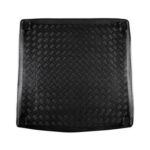Are Small Cars Dangerous? Why SUVs aren’t Safe?
Vehicle safety has been a very controversial topic over the years. People have had multiple questions related to it – Are small cars dangerous? Are SUVs safe? Etc.
IIHS says that with only a few exceptions, small cars have the highest driver death rates. It was revealed that 15 of the 20 vehicles that had the highest death rates were actually small cars and minicars. So, this means that small cars are completely more dangerous than SUVs? Well…, not really.
Let’s just understand all these questions in detail.
Are Small Cars More Dangerous?
Small cars are significantly more dangerous than large SUVs. A study by IIHS reveals that there is a considerably greater risk to the driver’s life in a small car as compared to an SUV. In fact, at 13 deaths per million registered vehicles, the lowest death rate in 2015, in terms of vehicle type, was for very large SUVs. Mini cars had the highest, with almost 64 deaths per million vehicles.
IIHS also found out that 15 cars out of every 20 cars with the highest driver death rates that were registered in 2017, were actually small cars or minicars.
IIHS says that both size and weight are responsible for the forces that passengers experience in a vehicle during a crash. The greater the force, the higher the risk of severe injuries. Large-sized vehicles have an advantage over small cars in multiple ways.
Firstly, they are heavier, so they are more likely to push a smaller vehicle backward during an impact. Hence, exerting higher force on the passengers of the smaller car. Moreover, large-sized vehicles have longer hoods. During a crash, the longer crush zone reduces the impact on the passengers and provides more protection to them.
In a study that involved head-on crashes between small cars and SUVs, it was found that the probability of the driver’s death in a small car is 7.6 times higher than the one in the SUV. What’s even more surprising is that even in crashes where the car had a better front crash test rating than the SUV, the odds of the driver’s death in the small were still 4.5 times higher.
IIHS demonstrated the impact of vehicle size and weight by conducting a series of crash tests in 2019, crashing mini cars and microcars into the mid-size cars and SUVs from the same manufacturer.
For instance, the Toyota Yaris has a good crash test rating, and it did well against a mini car. However, when the Yaris went against a Camry, it failed miserably; the occupants compartment collapsed and the door seal got bent towards the ground, resulting in serious injuries for the driver.
Have a look at some data from iSeeCars that reveals the deadliest cars by size:
| Vehicle size | Fatal Accident Rate (Cars per Billion Vehicle Miles) |
| SubCompact | 4.5 |
| Compact | 3.8 |
| Average for all cars | 3.3 |
| Midsize | 3.3 |
| Large | 2.6 |
Also read: 15 Cars that NEVER Rust (100% Galvanised)
Small Cars vs. Crash Tests
Small cars have been performing increasingly well in crash tests, as they have become safer over the years, thanks to modern safety equipment. However, crash tests tell only half of the story, as the ratings don’t compare for vehicles across segments. Weight and size play a key role, as in the real-world scenario, most car accidents are between two vehicles and not with a fixed barrier.
Over the years, all cars have witnessed massive advances in terms of safety. This has mainly to do with stricter norms regarding safety and advancement in safety features.
For instance, Electronic Stability Control was made mandatory in all vehicles. This led to better traction and stability while driving, and helped in avoiding crashes. Moreover, automakers have also stepped up and have installed more airbags in their vehicles and have also equipped them with modern level one autonomous and driver assistance safety features like front collision warning, automatic emergency braking, adaptive cruise control, lane assist, and driver alertness monitor.
Trending Video: How to Easily Bring Back to Life any Old Car Battery and Save Tons of Money (click to watch)
Consequently, the number of deaths in crashes has reduced considerably in the past 10 years, including small cars.
Small cars have performed considerably well in crash tests over the last 10 years, as more of them are scoring 5-star safety rating in crash tests done by National Highway Traffic Safety Administration (NHTSA) and Insurance Institute of Highway Safety (IIHS). Small cars like the Civic, Insight, Mazda 3, Elantra, Soul, Corolla, Sentre, Forte, and more made it to the 2021 IIHS top safety pick rating.
However, crash test ratings are just half the story. Both NHTSA and IIHS measure the safety of a vehicle by crash tests and other safety checks. However, these crash tests only involve cars hitting a fixed barrier, and not with other vehicles.
In the case of collision we’re with a fixed staple, barrier the mass of a vehicle is all but meaningless. Here mainly the safety systems like airbags and steel safety cages come into play. Moreover, the vehicle’s design is important, that is how efficiently it absorbs the energy in a crash.
But in the real world scenario, most of the crashes are between two vehicles. Here, the weight and size of the vehicle are a big deciding factor for the injury caused to the passengers. When a small car crashes into a large and heavy vehicle, there is a high chance of the driver in the small car facing higher damage than the one in the larger one.
For instance, if the Mirash, a small car by Mistubhushi, crashes into an F-150 truck, which is twice its weight, the passengers of the Mirage will suffer severe injury. Despite the fact that Mirage scored a four-star safety rating in the IIHS crash test.
This also explains the fact that crash tests give info about a vehicle’s crash protection in the same class, and don’t compare across classes.
Also read: Sedan vs. SUV Safety. What’s Safer? (+Crash Tests)
Why are SUVs not the Safest Either?
It’s true that small cars aren’t very safe, however, this doesn’t inherently mean that SUVs are the safest. A vehicle’s safety depends majorly on two factors – crash avoidance, and crash worthiness. While SUVs do tend to be safer during a crash with another vehicle, unfortunately, they fail miserably in avoiding crashes in the first place.
SUVs have a high center of gravity, which makes them more prone to rollovers. Sure, the mandating of ESC since 2012 has reduced rollover risks, but still, SUVs are far away from being called efficient in avoiding a crash. They take longer to stop, and in general, require greater skill to handle during an emergency. Moreover, the large interiors lead to greater distractions for the driver.
Also read: How to Cope with Running Over an Animal (8 Easy Tips)
What’s the Safest Car Type You Can Buy?
The safest vehicle you can buy is a midsize or large sedan with AWD. They are heavy enough to be safe in a collision with another vehicle, while they are not as bad as SUVs in avoiding a crash in the first place.
However, this doesn’t mean that small cars and SUVs are very unsafe. Make sure that you choose a vehicle that has performed well in the various government and insurance industry crash tests because that gives good info about the vehicle’s crash protection and other overall safety features.
Also, eye for Consumer Reports’ dynamic tests, such as accident avoidance and wet/dry braking, because Even better than surviving a crash is avoiding one in the first place.
Also read: Top 14+ Sedans with BIG Panoramic Sunroof
What are the Most and Least Dangerous Small Cars?
Let’s have a look at the most and least dangerous small cars
Safest small cars based on the number of deaths per million registered vehicles:
| Rank | Vehicle | Deaths per million registered vehicles |
| 1 | Volkswagen Golf | 0 |
| 2 | Nissan Leaf | 5 |
| 3 | Lexus CT 200 H | 6 |
*data by IIHS
Deadliest small cars based on Fatal Accident Rate (Cars per Billion Vehicle Miles):
| Rank | Vehicle | Fatal Accident Rate (Cars per Billion Vehicle Miles) |
| 1 | Mitsubishi Mirage | 10.2 |
| 2 | Honda Fit | 7.7 |
| 3 | Kia Forte | 7.4 |
| 4 | Chevrolet Spark | 7.2 |
| 5 | Nissan Versa | 6.1 |
| 6 | Kia Rio | 5.9 |
| 7 | Kia Soul | 5.3 |
| 8 | Hyundai Veloster Turbo | 5.2 |
| 9 | Nissan Versa Note | 5.2 |
*data by iSeeCars
Do Smaller Cars Get Safer?
Today, small cars are safer than ever before, thanks to the advanced safety features that have made their way into cars over time. Moreover, small cars are considerably better than large cars in terms of crash avoidance, as small cars have a low center of gravity and are easier to handle.
IIHS data from 2015 suggests that from 2005 to 2015, deaths per million registered vehicles have decreased by almost 56 percent for the mini-car category and up to 57% for the small cars category.
In the past, SUVs and pickups posed much more danger to passengers in smaller cars as their bumpers and other energy-absorbing structures were comparatively quite higher. This meant that those tall vehicles could easily climb up the hood of the smaller car, and pose serious injuries to its passengers.
However, over the years, carmakers have done several design and structural changes to these vehicles. Hence, newer pickups and SUVs are less dangerous to smaller cars. In fact, the odds of car passengers dying in collisions with SUVs than with cars has dropped from 59% between 2009-2012 to just 28% between 2013-2016.
Also read: 3 Reasons Why Hatchbacks are Popular in Europe
How to be Safe Even in a Small Car?
Experts suggest that regardless of the type of vehicle you drive, how you drive is what matters the most. In fact, according to NHTSA, human performance accounts for more than 90% of vehicle crashes. So, here are some driving safety tips to help you avoid crashes:
- Develop a responsible attitude towards driving.
- Try getting as much supervised practice driving as possible.
- Always wear your safety belt.
- Never drink and drive, it can cost you your life.
- Try to limit your number of passengers.
- Try reducing night driving as much as possible.
- While driving, use cell phones only when it’s an emergency.
- Always stay attentive and keep your eyes on the road.
- Drive within the speed limits.
- Look out for blind spots.
- Be careful while switching lanes, taking turns.
- Make sure that you follow all the traffic rules while driving your car.
- Always pay attention to the caution signs that are on the road.






